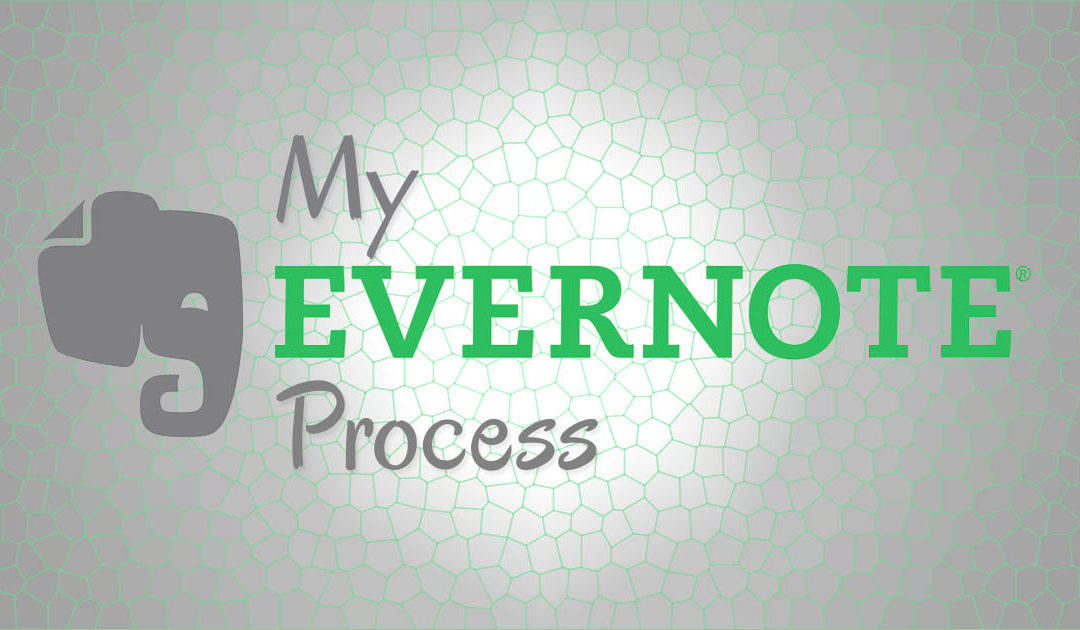Ever since college, I’ve been a fairly sedulous note taker. Since then, and especially over the past few years, I’ve really grown to see the value of organizing and logging everything. That said, simply storing information isn’t the same as doing something with it; it needs to be processed. Although my process shifts and adjusts as I need it to, I promised a few friends that I’d share it.
What’s the Point?
You might want to take one glance at this and think “But Lynk, I’m long done with school, I’ve got nothing to study or take notes on.”
The fuck is wrong with you, Carol? Did you peak in your early 20’s? The learning and growth process isn’t something that ends with that Western Civ class you needed to get enough credits to get a diploma. You’ve got to apply that shit to real life.
Taking notes, organizing your own data, and being able to quickly recall and audit that data can bring a lot of benefits, but when you can add a process for actually getting shit done, then you are really cooking with fire. For all of this, I use Evernote. Evernote is, as they say, a workspace for your life’s work. and there are a lot of ways I apply this single system to many avenues in my life. Here are a few:
- I don’t have to remember everything. My memory is filled with video game tracks and levels, songs from Animaniacs, and misquoted movie references. I simply don’t have the storage capacity to file away every detail of a meeting, that funny thing someone said at Applebees, the movie you recommended, and what my smart phone insurance covers. If I can take 10 seconds to search for what I need to know, I can free my brain up for things that are far more important.
- It has allowed me go paperless. With barely any investment at all, I was able to go paperless. This means my receipts, bills, leases, and any other paperwork is digital and easily accessible. More importantly, it’s searchable. I don’t need to hunt around through it. If the words “Lenovo” and “Warranty” are in a document, I can search for it and bring it up immediately, even if it is a scan or photo of the document.
- I’m able to declutter. While going paperless, I also realized that I had a lot of stuff that I could simply get rid of. CD inserts, product keys, birthday cards, instruction manuals, and virtually anything else can get digitized.
- I’m able to track personal projects. Whether I’m writing a blog article, researching new homes to live in, or tracking personal goals. Everything goes smoother when it’s documented.
- I keep a daily log/journal. Personally, I’ve found journaling to be instrumental in my own growth. Whether I’m trying to figure out what factor in life is causing stomach issues (fuck you, spinach), keeping myself on track with short term goals, or just dumping my brain onto a canvas, this same system gives me a medium to do so.
- Everything is with me, everywhere I go. This is one of my favorite aspects of Evernote. Every other application and platform I tried was almost comically limited, but Evernote lets me access everything from my phone, tablet, laptop, desktop, and even securely in any web browser if I’m really roughing it.
Let Me Take You Back
Before I dive right in, I think it’s worth talking about the evolution of this process, and where some of the ideas come from. I can’t take credit for all of it, but I’ve taken several components from the methods of others and tweaked them to work for me.
I’ve been using Evernote since 2009. Before that, I used Microsoft OneNote. Before that, I used DavidRM Software’s The Journal.
I made the switch to Evernote because Microsoft was late to the party like a panting rhinoceros a the back of the cloud computing stampede. OneNote had terribly crummy Android support, and while the desktop client was always pretty slick and extremely flexible, it was pointless to try syncing your data across all of your devices. This has changed over the past couple of years with Microsoft OneDrive. Even still, Evernote on mobile devices is a far superior product, still making alternatives look like afterthoughts. While Evernote isn’t perfect, it’s well supported and has a large, adamant community.
It’s worth mentioning DavidRM Software’s The Journal. Although I haven’t used it in several years, it was definitely hand-crafted for writers, and according to the website, kept up-to-date. It definitely served my purpose in college, as I was able to use it on my Windows CE and Windows Mobile devices. However, there is no Android or iOS support. Instead, The Journal can now export to Evernote, which is something I might investigate down the road. For now though, I’m happy keeping things simple.
The Essence of My Evernote Process
My process is a cronenberg variety show of other well-established, thoroughly-covered productivity methods. I’ve mixed the ingredients together until my efficiency omelet has everything I want in it.
It’s based roughly on a couple of core concepts, which you can learn more about by reading into David Allen’s Getting Things Done. There’s a quick introduction here that is a good start to how GTD works. In short, GTD is an assembly line that carries your tasks and projects forward. It gives you the opportunity to process each task and decide what to do with it, even if that’s just to toss it aside for a while. I don’t use the entire GTD process personally, but I can appreciate it, and it is worth reading up on to see what you can fit into your work flow.
I also take several cues from The Secret Weapon, which is essentially a formula to fit Getting Things Done into Evernote. As TSW explains, all these things you are supposed to remember and keep track of pile in through different systems. These items could pile up in your email inbox, rot away on your to-do list, be born out of an inspiring conversation at the bar, or flash through your brain while taking a dump. If you don’t have a repository for them, that’s as far as they are going to get. That last one is the one that is the most dangerous for me; if I don’t get an idea out of my head immediately after having it, I likely won’t have it again.
Once it enters your system, you just need to have the infrastructure to process it, prioritize it, and, if you feel like it, do something about it.
The Setup
It’s stupid simple. You create an account at Evernote.com.
Download and install Evernote.
Log in.
Create Your Catch-All
You’ll want to create a few Notebooks to get started. I’ll break mine down in a moment, but the most important category to make is a Catch-All. This category is where all new stuff is going to land unless you specifically put it somewhere else. For me, being able to quickly find this category is pretty important, so in my case, I called it !-INBOX-! (I used to just call it Unfiled, but I like it on the very top).
It’s worth noting that you need to subscribe to Evernote Plus or Premium to take full advantage of your Catch-All, and a lot of these other features. If you aren’t keen on diving in and committing to Evernote’s subscription, you can purchase a Moleskine Evernote Smart Notebook and get 3-months of Evernote Premium to try it out. At least then, if you decide you don’t like Evernote, you get a slick-ass physical notebook.
Paying for Evernote gives you the ability to create an email address that you can forward notes to. I’d recommend going straight to Evernote Premium, because you also get the ability to search scanned documents, attached Office documents, PDFs, and images.
Notebooks
I organize all of my notes into an array of category stacks. I’m very careful not to create categories in excess, because I hate having to look for something in multiple places. I map my notebooks out based on the notes I have, and I reevaluate as needed.
There is a lot of debate about whether it’s better to have just a few Notebooks verses many, and some people like to use Tags to organize their notes more than Notebooks. The logic behind my ways is:
- Notebooks are familiar. Other than the fact that you can only nest them once (Notebooks can’t technically have sub-notebooks, but you can create a notebook stack that contains a single tier of notebooks), they are similar to PC folders. A note can only exist in one notebook.
- You can drag notes between them. Another deciding factor for me is being able to drag and drop notes from one category to another, although I literally just tried dragging a note to a Tag, and sure enough, it applied the tag. Evernote, you beautiful sonuvabitch.
- Long term continuity. In the event that Evernote doesn’t outlast me and my process, Microsoft has a handy-dandy Export from Evernote tool. Unfortunately, OneNote doesn’t support tags, so I’d be pretty butt-hurt if the primary method for organizing all of my notes didn’t carry over. Notebooks translate just fine.
My Notebooks
!-INBOX-!
This is the catch-all. I used to call this “Unfiled,” but I’d always let crap hang out in it too long. Since GTD calls your catch-all the Inbox, I figured to use that moniker too. My goal is to empty it weekly, if not more often, and to always have under 10 notes in it by the end of each day. Almost everything dumps here – email, the Evernote Web Clipper (a browser extension that sends articles to Evernote), my scanner, etc.
!Lynk Log!
This is my most active area. It contains several notebooks for different types of journals, journal projects, and templates.
!2016 31-Day Challenge! – Each year I do a 31-day journaling challenge. I save the questions/templates and tweak them a little every year before deploying them.
!Daily Journal! – Nearly every day, I journal. This is where my entries go. I will usually pull one of a few templates I have as a base.
!The Daily Lynk! – This is a daily visual board process. I’m going to flesh this out and show it off in a future post, but essentially it is a series of notes I look at every morning.
Character Sheet – Information about my character sheet, something I’ll be sharing on this blog soon.
Journal Templates – Various daily journal templates, including the 31-Day Challenge templates. Using a template is as easy as copying/pasting into a new note. (Dear Evernote, please give us the ability to pull templates from a drop down menu!)
#Inspiration
I decided to use the hashtag ironically, but since it’s a special character, it does keep this category stack at the top. This stack contains even more hashtagged categories, such as #art, #quotes, #silly, and #watch. This is actually the most recent addition to my Evernote process, and I’m not done tweaking it, but the basic idea is as I gather something inspirational, hear something funny, or I’m told I should check out a piece of media or content, I drop it in here. There’s no particular sorting or prioritization, it’s just a visual dumping ground of things that I can summon at my disposal.
The idea behind #Inspiration is that they are short, at-a-glance items that I’ve found. The hashtag works in my favor, because I can easily find these notebooks and file things into them. Typing a hashtag into Evernote’s notebook search brings up a quick list of all corresponding notebooks.
.Ideas
These are personal ideas that I’ve come up with but haven’t had time to flesh out. I organize .Ideas with several subcategories like .blog_ideas, .stories, and .project_ideas. Once an idea is processed into a project or fleshed out, it is moved somewhere else.
Data
This stack has a few notebooks with general and personal information, such as warranties, software licenses, and product keys. I also keep a running log of my allergies, medicines, and other health information here. There are a few quick references that I often need, like my home Wi-Fi password, the size of my pants, and a few various pin numbers I can never seem to remember. Evernote has the ability to password-protect a selection of text to add further security.
Documents
This is where all of my scanned documents go. I’ve organized categories based on what kind of document it is. For example, I have categories for apartment, bank, health, Normandy (my car), receipts, and utilities. This stack also has my Expensify category in it, which I’ll talk about shortly.
FileThis
This is a 3rd party service that automatically pulls invoices and paperwork from online sites and pushes them to Evernote. The free version allows you to link up to six accounts. This comes in handy when you don’t want your cellphone provider mailing you garbage, but also don’t want to log onto their website just to access your invoices. The more centralized everything is, the less you have to think about it. Check it out here.
People
I won’t remember your birthday. I won’t remember your favorite kind of cake. Or your favorite drink. Or your shirt size. But I will jot it down. This creeper category is actually extremely useful around the holidays. I even set notifications up so Evernote reminds me when a birthday is coming up so I don’t forget it. This is also where I store scanned birthday and Christmas cards.
Projects
This stack holds a small list of ongoing personal projects. Larger, more long-term projects (Like Lynk.co) get their own stack.
References
This stack contains other notebooks, arranged by category. These are mostly web clippings, PDFs, blog articles, and tutorials. There are recipes, writing tips, and leadership articles that I’ve read and can pull back up anytime I want.
Trapper Keeper
This stack resembles the psychedelic 3-ring binders from my childhood. It’s messy, unorganized, and full of old crap that I’d be embarrassed to have to look at again. There’s a lot of crap from ex-girlfriends in there. It’s bad news. I stay out of it as much as possible.
My Tags
While most of my organizational method is through stacks and categories, I use tags to prioritize and link data together. I don’t make very many tags, and this keeps them more useful. The main tags I use on a regular basis are my ! tags. They are easy to apply and search for, since I just need to type ! for it to bring down my seven or so tag options:
!ACTION_ITEM! – This is super important
!BLOG_TOPIC! – This note might also make a good blog topic, but it’s filed somewhere else.
!DAILY! – This is something I look at every single day.
!READ_ME! – Something that needs to be read in the next day or so.
!READ_SOMEDAY! – Something that I’d like to read later on.
!SHARE! – Something I’ve clipped or stored for the purpose of sharing with someone else at some later time.
!TEMPLATE! – A reusable note that I can select, copy, and use. I mostly use these for my daily journaling templates.
I don’t tend to make a tag unless I plan on dropping quite a bit of information in it. For example, if I’m gearing up to go to an event, I’ll make a tag for the event so my flight information, hotel information, and anything else I need is there and easy to pull up. I’ll usually make that tag a shortcut so I can whip it up in a couple of taps on my phone.
Priority Tags
Similar to ! tags, I use priority tags when mapping out tasks based on the GTD method. I can quickly summon these in the tags field by typing their corresponding number.
1-now
2-next
3-soon
4-later
5-someday
6-waiting
7-weekend
Goal Tags
Sometimes I’ll clip an article specifically for a project or goal I’m working towards. In cases like this, I’ll drop a tag on it so it is top of mind when working on that project.
Other Stuff
Evernote Moleskine Smart Notebook
Although I don’t tend to handwrite my notes very often, I do have the Evernote Smart Notebook by Moleskine. Snapping a photo of a page does straighten everything out, and I’m able to search the notes despite my crappy handwriting. I don’t know how Evernote does this – I suspect some poor soul actually has to run around the Evernote offices asking around for options to decrypt my penmanship.
Expensify
I mentioned Expensify when going over my notebooks. Expensify is a sweet tool that takes your scanned receipts and organizes them. Create your account and map a notebook, and your job is done.
Going Paperless with a Doxie Scanner
I hate mail. Unless you are shipping me a thing that I want, sending me a bunch of garbage is a waste of both your time and mine. Thanks to my system, mail pretty much gets opened and thrown away as it was meant to be. With Evernote, you can use your phone to snap photos of documents, and Evernote will do a pretty good job at converting the content to searchable text. This is even easier with a scanner. To get started, I recommend the Doxie Go Plus. It’s the one I use, until I decide to fork over the big bucks for a Scansnap. It’s cheap, simple, and scans all the worthless garbage I get sent so I can get the joy out of throwing it away.
Tips
Back That Shit Up – Yeah, it’s nice having all of your information synced to the cloud, but it’s worth exporting your notes every so often just so you have them. In Windows, right-click on Notes from the sidebar and select Export Notes. You can save them all as a single file on your desktop and back it up however you want.
Integrations – There are a lot of apps that plug into Evernote. Many Android apps can share content into Evernote (look for a share icon). IFTTT https://ifttt.com/ (If That Then This) has a ton of recipes for integrating Evernote with other services. For example, my Fitbit pushes data into my Evernote every day.
Some Other Resources
GTD in 15 Minutes
The Secret Weapon
I’ve Been Using Evernote All Wrong (Lifehacker)




